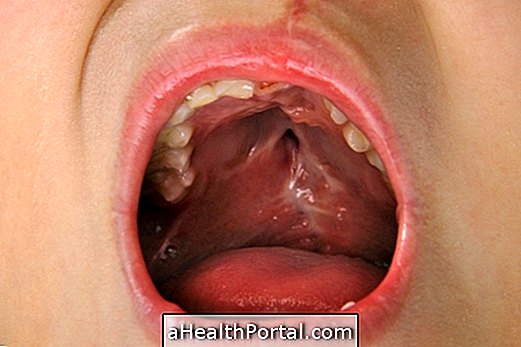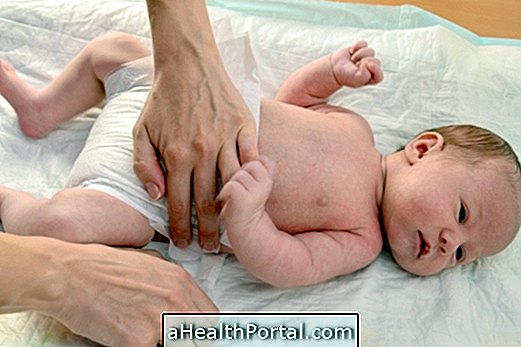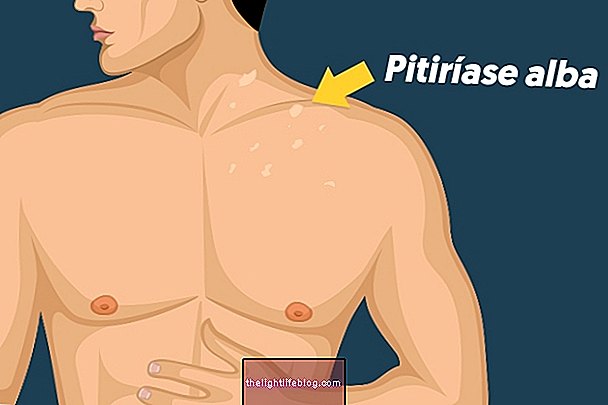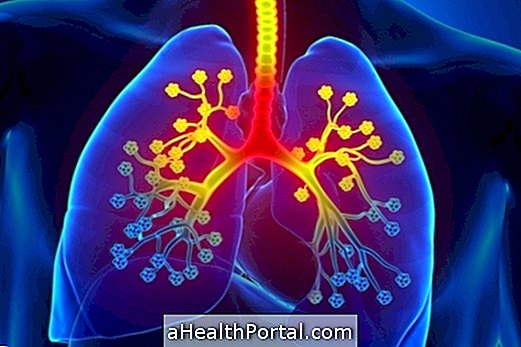Microcephaly is a disease in which children's heads and brains are smaller than normal for their age, which impairs their mental development, because the bones of the head, which at birth are separated, unite very early, preventing that the brain grows and develops its capabilities normally.
The child with microcephaly may need lifelong care, but this is usually confirmed after the first year of life and will depend a lot on how well the brain has developed and what parts of the brain are most compromised. See details on how the child's life with microcephaly is.
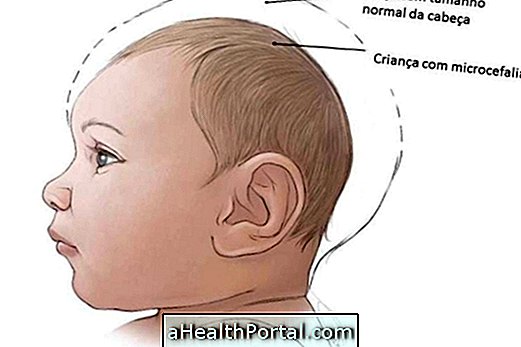
Normally microcephaly is diagnosed when the size of a child's head at one year and three months is less than 42 centimeters.
Consequences of microcephaly
Children with microcephaly can have serious consequences such as:
- Mental retardation;
- Intellectual deficit;
- Paralysis;
- Convulsions;
- Epilepsy;
- Autism;
- Muscle rigidity, scientifically called spasticity.
Although there is no specific treatment for microcephaly, some measures can be taken to reduce the symptoms of the disease. Usually the child needs lifelong physical therapy to develop better, preventing respiratory complications and even ulcers that can arise from being bedridden or in a wheelchair for too long.
All these changes can happen because the brain needs space so that it can reach its maximum development, but because the skull does not allow brain growth, its functions are compromised, affecting the whole body.
Microcephaly can be classified as being primary when the skull bones close during pregnancy until 7 months of pregnancy, which causes more complications during life, or secondary, when the bones close in the final phase of pregnancy or after the birth of the baby.
Understand in a simple way what microcephaly is and how to take care of a drink with this problem by watching the video below.

What can cause microcephaly?
Causes of microcephaly may include genetic or infectious diseases, exposure to toxic substances, or malnutrition. Some situations that may cause microcephaly may be:
- Infections such as rubella, cytomegalovirus and toxoplasmosis;
- Zika during pregnancy, especially in the first trimester of pregnancy. See how Zika can cause microcephaly.
- Consumption of cigarettes, alcohol or drugs such as cocaine and heroin during pregnancy;
- Rett syndrome;
- Mercury or copper poisoning;
- Meningitis;
- Malnutrition;
- Maternal HIV;
- Metabolic diseases in the mother such as phenylketonuria;
- Exposure to radiation during pregnancy;
- Use of medicines against epilepsy, hepatitis or cancer in the first 3 months of pregnancy.
It is believed that infections such as dengue fever and chikungunya fever during pregnancy are also linked to microcephaly.
Microcephaly may also be genetic and occurs in children who have other diseases such as West Syndrome, Down Syndrome, and Edwards Syndrome, for example. Therefore, the child with microcephaly who also has another syndrome may have other physical characteristics, disabilities and even more complications than children who only have microcephaly.
Diagnosis of microcephaly
The diagnosis of microcephaly can be made during pregnancy, with prenatal examinations, such as ultrasound, for example, and can be confirmed soon after delivery by measuring the size of the baby's head. Learn more about when to perform ultrasound during pregnancy by clicking here.
In addition, tests such as computed tomography or MRI also help measure the severity of microcephaly and what its possible consequences will be for the development of the baby.
Microcephaly has a cure?
Microcephaly has no cure because the factor that hinders brain development, which is the early union of the bones that forms the skull, can not be removed. If this early union of bones occurs during pregnancy, the consequences may be more severe because the brain does not develop, but there are cases in which the union of these bones occurs at the end of gestation or after birth, in which case the child may have less serious consequences.
Treatment for microcephaly
The treatment of microcephaly does not cure the disease, but it helps to reduce the consequences on the mental development of the child.
One possibility of treatment is to have a surgery to slightly separate the bones of the skull, in the first 2 months of life, to avoid the compression of the brain that prevents its growth. When in addition to microcephaly the child has hydrocephalus, which is the presence of fluid inside the brain, there is also the possibility of putting a drain to control this liquid. Understand what hydrocephalus is.
In addition, it may be necessary to use medicines that help the child's daily life, which act by reducing muscle spasms and improving muscle tension. Physical therapy is indicated and can help in the physical and mental development and therefore the more stimulation within the physiotherapy the child has, the better the results. Thus, it is recommended to do the largest number of physical therapy sessions per week.
In addition, botox injections into certain arm or leg muscles may be helpful in decreasing involuntary muscle contraction and improving daily care with the baby and even physiotherapy sessions. Understand how botox works and why it is indicated in case of microcephaly here.
The doctor accompanying the patients with microcephaly is the pediatrician and neurologist, but other health professionals are also needed as a psychologist, dentist, occupational therapist and speech therapist.




